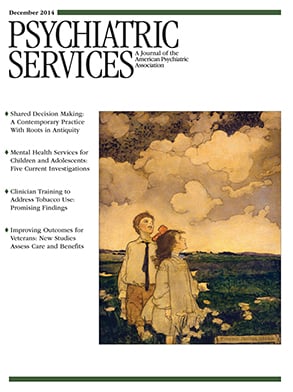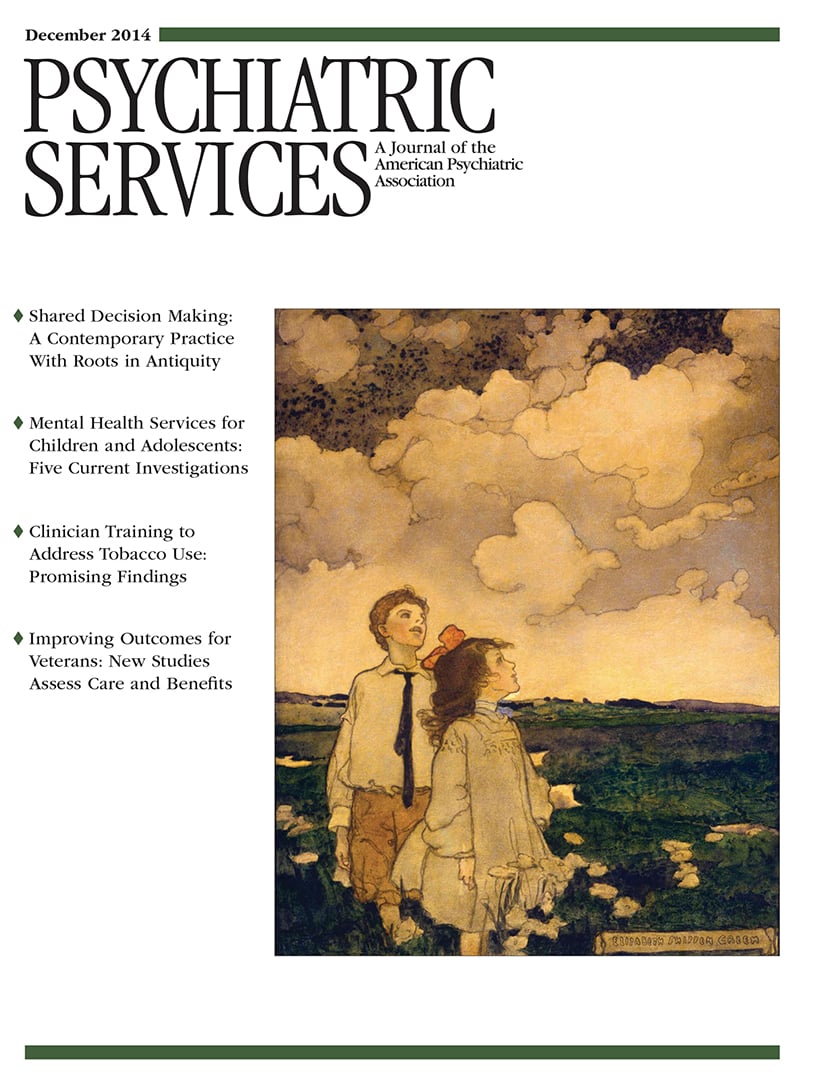Kaiser Foundation’s annual 50-state survey of state Medicaid programs: States expect the number of people enrolled in Medicaid to increase an average of 13.2% in fiscal year (FY) 2015, according to the 14th annual Medicaid budget survey conducted by the Kaiser Family Foundation’s Commission on Medicaid and the Uninsured (KCMU). The increase shows the early effects of the first full year of implementation of the Affordable Care Act (ACA). The 28 states (including the District of Columbia) that are implementing the Medicaid expansion for FY 2015 expect to see the largest growth in enrollment and spending—an 18% increase in enrollment and an 18.3% increase in total Medicaid spending (state and federal funds). The spending increase is mostly driven by new enrollment, all of which is financed by federal funds. With the additional federal dollars, state spending in expansion states is projected to increase at a rate of 4.4% in FY 2015. The 23 states not implementing the ACA Medicaid expansion expect an average growth in enrollment of 5.2% for fiscal year 2015 and project state spending to increase at a rate similar to the increase in total Medicaid spending (6.8% and 6.5%, respectively). With the economy improving, Medicaid programs across the country reported that they are focused primarily on implementing many changes included in the ACA; pursuing innovative delivery and payment system reforms to improve access quality and achieve budget certainty; and continuing to administer this increasingly complex program. The 77-page report,
Medicaid in an Era of Health and Delivery System Reform: Results From a 50-State Medicaid Budget Survey for State Fiscal Years 2014 and 2015, is available on the KCMU Web site at
kff.org/report-section/medicaid-in-an-era-of-health-delivery-system-reform-appendix-8639.
NIMH creates new RDoC unit: The Research Domain Criteria (RDoC) unit was recently established by the National Institute of Mental Health (NIMH) to support the development of the institute’s RDoC initiative. The unit will facilitate communication among scientists, clinicians, and the public to reframe mental health research from diagnosis to treatment. The aim of the RDoC initiative is to accelerate the pace of research that translates basic science into clinical settings. The RDoC approach emphasizes neurodevelopment and environmental effects. “The RDoC approach cuts across traditional diagnostic categories to identify relationships among observable behavior, neurobiological measures, and patient self-report of mental status,” said NIMH Director Thomas R. Insel, M.D. The RDoC initiative, which was launched in 2009, has brought together researchers and clinicians to lay the groundwork for RDoC by defining and organizing an initial set of fundamental units of mental functioning (called domains) into the RDoC research matrix. The RDoC unit is developing a new online discussion forum, expected to launch in the next few months, where investigators and clinicians can continue to converse and collaborate on the RDoC framework in a virtual environment. More information is available on the NIMH Web site at
www.nimh.nih.gov/research-priorities/rdoc/index.shtml.
APA’s online toolkits for state-based Medicaid advocacy: A work group of the American Psychiatric Association (APA) has developed two online toolkits designed to help psychiatrists create effective teams to advocate for improved Medicaid services for people with mental illness. Certain ACA provisions allow state Medicaid managed care plans to provide an array of home- and community-based services not usually available in Medicaid programs. Even states that do not expand their Medicaid programs can implement these provisions. But taking action at the state level requires technical knowledge and skills in collaborative, issue-focused advocacy that psychiatrists may lack. Both toolkits emphasize a coordinated approach that brings together clinicians, advocates, patients’ rights groups, policy makers, and others. The first toolkit, “Managing Managed Care: A Toolkit for Advocates,” outlines the key role that Medicaid has played in behavioral health care and how its role as the largest single payer for mental health services, particularly services for people with serious mental illness, has been enhanced by the ACA. The second toolkit, “An Advocacy Toolkit—Improving Care for People With Serious Mental Illness: Medicaid’s 1915(i) Option,” focuses on a little-known provision in the ACA that allows states to provide a host of ancillary services—such as assertive community treatment and supported employment—under their Medicaid programs. The APA work group was chaired by Howard H. Goldman, M.D., Ph.D., editor of
Psychiatric Services. Michael Hogan, Ph.D., a consultant to the work group, was the lead author. The toolkits are available on the APA Web site at
http://psychiatry.org/practice/managing-a-practice/medicaid.
Joint SAMHSA-USDA effort to promote behavioral health care capacity in U.S. communities: The Substance Abuse and Mental Health Services Administration (SAMHSA) and the United States Department of Agriculture (USDA) have announced an interagency agreement to improve behavioral health care capabilities in U.S. communities, especially underserved communities. Under the agreement, SAMHSA and USDA will build on collaborations with regional, state, and local public service organizations to improve gathering, analysis, and sharing of data related to behavioral health disorders and issues. The interagency agreement draws on USDA’s nationwide network of more than 925 cooperative extension sites to develop a better understanding of key factors involved in collecting and sharing behavioral health care data in communities. Through a USDA grant with Michigan State University, data collected and provided to SAMHSA and USDA will include information about existing behavioral health surveillance systems, the kinds of data and support that would be most helpful to communities facing various types of behavioral health care challenges, existing community partners that could assist in data gathering, and the types of training needed. SAMHSA will use this and other information to help improve communities’ capabilities to gather and share information, upgrade systems for tracking behavioral health trends, and enhance systems for responding to acute needs, such as in natural disasters.
Commonwealth Fund brief assesses states’ essential benefits packages: The ACA requires insurers to provide coverage of a minimum set of medical services known as “essential health benefits.” (Behavioral health services are considered as “essential” in the ACA.) This reform was implemented using a “transitional” approach that left many important decisions to the states. Although federal officials pledged to reassess that approach in time for the 2016 coverage year, no new guidance has been published, leaving only a few months to assess whether enrollees are having a difficult time obtaining needed services because of coverage gaps or the cost of care and to modify the package accordingly. A new issue brief from the Commonwealth Fund examines how states have exercised their options under the initial essential health benefits framework. The analysis found significant variation in how states have developed their essential health benefits packages. The brief makes clear that this variation will complicate the federal assessment by making it difficult to compare states. In addition, federal officials will need concrete information on how consumers are experiencing coverage, such as data on complaints, use of out-of-network and noncovered services, and claims appeals. Under ACA transparency requirements, insurers must report this information. However, implementation of the transparency rules has been delayed, and the time frame for issuing essential health benefits regulations in time for the 2016 plan year is growing short. The ten-page issue brief,
Implementing the Affordable Care Act: Revisiting the ACA's Essential Health Benefits Requirements, is available on the Commonwealth Fund Web site at
www.commonwealthfund.org/publications/issue-briefs/2014/oct/revisiting-aca-essential-health-benefits-requirements.
Commonwealth Fund case study series on accountable care systems: A key reform goal of the ACA is to create a health care system that rewards providers for achieving optimal care outcomes at a sustainable cost. ACA provisions have allowed the federal government to test and implement several new payment models designed to achieve this goal for the Medicare program. In addition, several states are redesigning their Medicaid programs in pursuit of accountable care, and commercial insurers are partnering with providers to reward value rather than service volume. A Commonwealth Fund case study series describes how three diverse organizations—Health Share of Oregon (227,000 Medicaid beneficiaries), Hill Physicians Medical Group in northern California (41,000 members of the California Public Employees Retirement System), and Marshfield Clinic in Central Wisconsin (30,000 fee-for-service Medicare beneficiaries)—are developing accountable care systems to improve quality, reduce the costs, and improve the health of populations of patients insured by Medicare, Medicaid, and commercial health plans. The organizations employ an array of strategies to identify and address unmet medical needs, improve care transitions, and reduce inefficiencies and unnecessary variation in care. Their progress suggests that payment reforms can foster the accountability necessary to transform care. An 11-page overview,
The Road to Accountable Care: Building Systems for Population Health Management, along with three separate case studies, are available on the Commonwealth Fund Web site at
www.commonwealthfund.org.
Bazelon brief explains DoL rule on home care services: The Department of Labor (DoL) has issued a new regulation governing home care services for people with disabilities and seniors. This rule may affect some long-term care programs, particularly “consumer-directed” programs in which a person receiving services can hire his or her own worker (often family members or close friends) and can direct the care provided by the worker. Consumers and advocates must be knowledgeable about this rule and advocate to ensure that the state implements the rule in a way that helps consumers and the important workers who provide services to them and does not cause unintended harms, such as cuts to services. A nine-page brief from the Bazelon Center for Mental Health Law details potential effects of the new rule and recommends action steps that consumers and advocates can take to ensure that state officials, such as state Medicaid agencies, directors of state aging or disability departments or offices, and directors of operating agencies, have analyzed the impact of the rule on the state’s consumer-directed programs and made plans to include additional funding in the state’s 2016 budget.
Action Steps for Consumers and Advocates Regarding the New Home Care Rule: How to Prevent Service Cuts and Protect Consumer-Directed Programs is available on the Bazelon Web site at
www.bazelon.org.
NASHP report on states’ activities to promote accountable care: An analysis by the National Academy for State Health Policy found that 17 states are implementing accountable care strategies in Medicaid or state employee health programs. State activities include financing accountable care models, developing state standards to certify accountable care organizations, and aligning accountable care principles with the creation of new community-based organizations or Medicaid managed care organization contracts. Data are from a two-year project (October 2012 to February 2014) supported by the Commonwealth Fund. “As more states begin to use their leverage as health payers, purchasers, and regulators to reshape health care delivery, policy makers can learn from their accountable care design principles and early pilot results,” the authors conclude. The 22-page report,
The Essential Role of States in Financing, Regulating, and Creating Accountable Care Organizations, is available on the NACHP Web site at
nashp.org/sites/default/files/The_Essential_Role_of_States_in_Financing_final.pdf.

